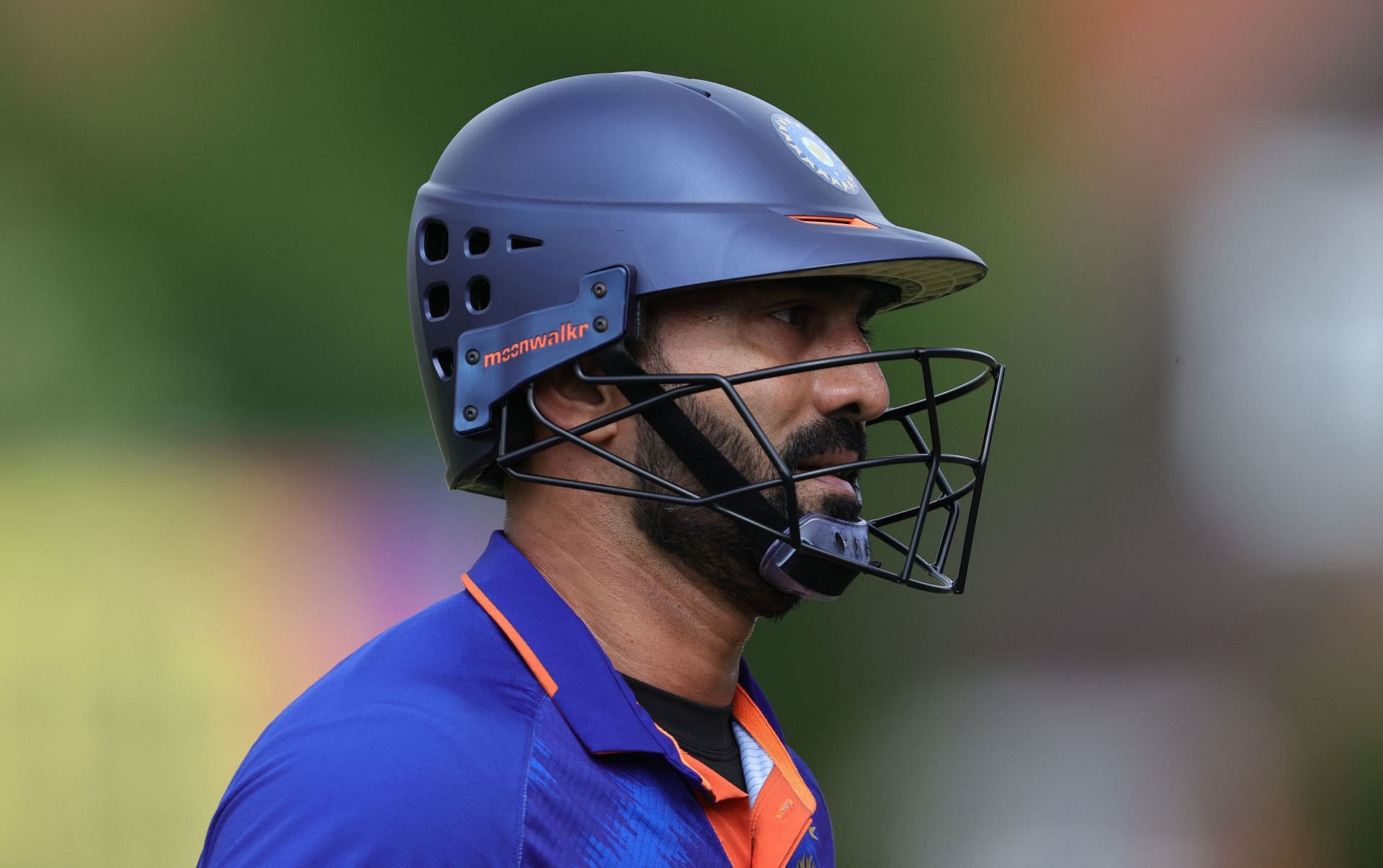
Dinesh Karthik, the gritty shapeshifter who willed himself into his final form
Eleanor Roosevelt once said that the future belongs to those who believe in the beauty of their dreams. Approximately a year after Dinesh Karthik boldly proclaimed that he wants to return to India's T20 World Cup squad, he was named in the 15-man contingent traveling to Australia next month.
"Dreams do come true," Karthik promptly tweeted. This moment belongs to him, and only because he believed. He believed when he was staring down the barrel of two unimpressive IPL seasons, averaging 14.08 at 126.11 in 2020 and 22.3 at 131.17 in 2021. He believed when he was 36, seemingly way past his prime. He believed when India had hordes of young wicket-keepers fervently banging down the selection door. He believed when even his closest friends started to question his sanity.
A lesser man wouldn't have. A lost decade in international cricket would've struggled on the lips of someone not as resolute as him. But when Dinesh Karthik spoke, he spoke not of his regrets but of his dreams and how he would go about manifesting them. In an exclusive interview with Sportskeeda back in June 2021, Karthik said:
"I'm not a big goal-setting person, but I'll take whatever comes my way. I've been very vocal about what I intend to do in the next couple of World Cups, so I'm just praying that if and when I get picked, I do the best that I can and make the country proud."
At the time, Karthik had remained unbeaten in 12 of his last 17 T20I innings. He had notable scores of 30(13), 33*(16), 31*(34), 22*(18) and 8*(3) since the famous Nidahas Trophy final. It was clear that he was ordained to be a specialist lower-order batter, but the selectors weren't on the same page. They entrusted those roles to Ravindra Jadeja and Hardik Pandya, both of whom batted higher up the order in the IPL.
But Karthik forced the Indian selectors to turn the page, with a change in franchise unleashing the vigilante finisher in him. His 330 runs in IPL 2022 at an average of 55 pushed the selectors into a dark alleyway and his strike rate of 183.33 held them at gunpoint. And once they inevitably relented, he essayed knocks of 30*(21), 55(27) and 41*(19) among others to stamp his authority on T20I cricket.
Dinesh Karthik's back, people. He's on the plane heading Down Under and he's better than ever. Since it's so tough to remember, what was he once like?
Dinesh Karthik, the legacy version
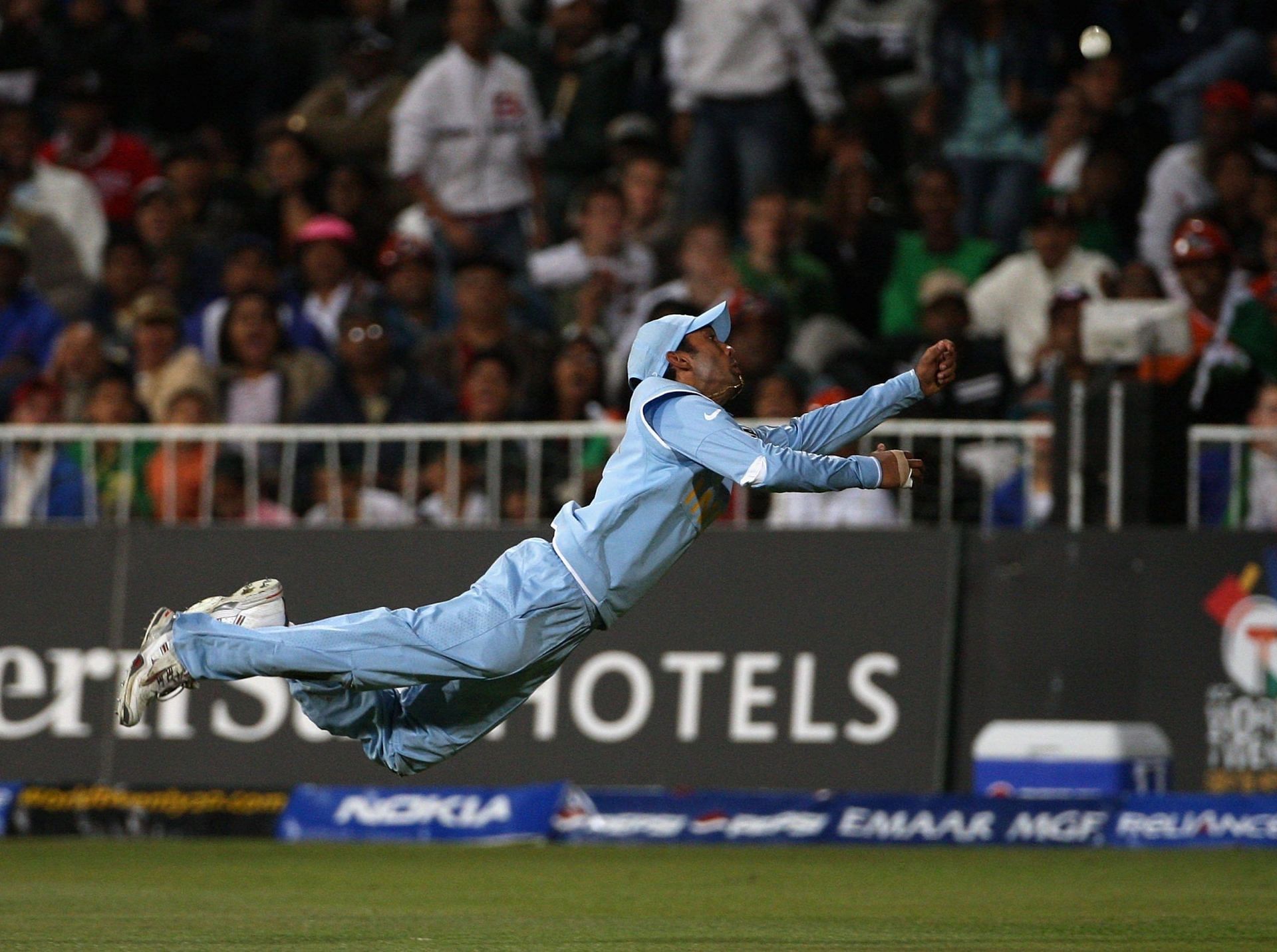
Dinesh Karthik has swung up and down the order like a pendulum for India in T20I cricket, having batted in all of the top seven positions. He has four innings in the top three and six at 4 and 5. The majority of his innings, largely due to his recent recall, have come at 6 and 7, where he has come into his own.
The numbers (average/strike rate) paint a picture as clear as Karthik's thinking - 14.5/100 while opening, 4/89 at 3, 25/139 at 4. He shows signs of life at 5 with an average of 47, but both the sample size (3 innings) and the strike rate (114) don't betray enough insights.
At No. 6, though, he has remained unbeaten in half of his 20 innings. At 7, he has carried his bat in six of his 10 innings at 45.5/165. At the risk of appearing to use an inherently flawed metric like BASRA for the sake of illustration, Karthik is at his best at No. 7. An eye test is enough to confirm that, corresponding to an entry point roughly around the 15th over.
Karthik's IPL numbers are even more skewed. He has a combined 50 innings at 6 and 7, which is less than he does individually at No. 4 (64) and No. 5 (65). It shouldn't come as a surprise that both his average and strike rate at 6 and 7 are higher than those at all other positions. For the Royal Challengers Bangalore, he scores a whopping 16.84% of the team's runs while batting at No. 7.
The legacy version of Dinesh Karthik was like a Siberian husky living in his hometown of Chennai. He could just about manage to survive, but he wasn't actually at home. He was good, good enough to earn ₹12-crore IPL contracts, but he wasn't great. Once they picked him up and packed him to the batting order's frigid South Pole, where others came to die, Karthik batted his way to the pink of health.
Dinesh Karthik, the vigilante finisher
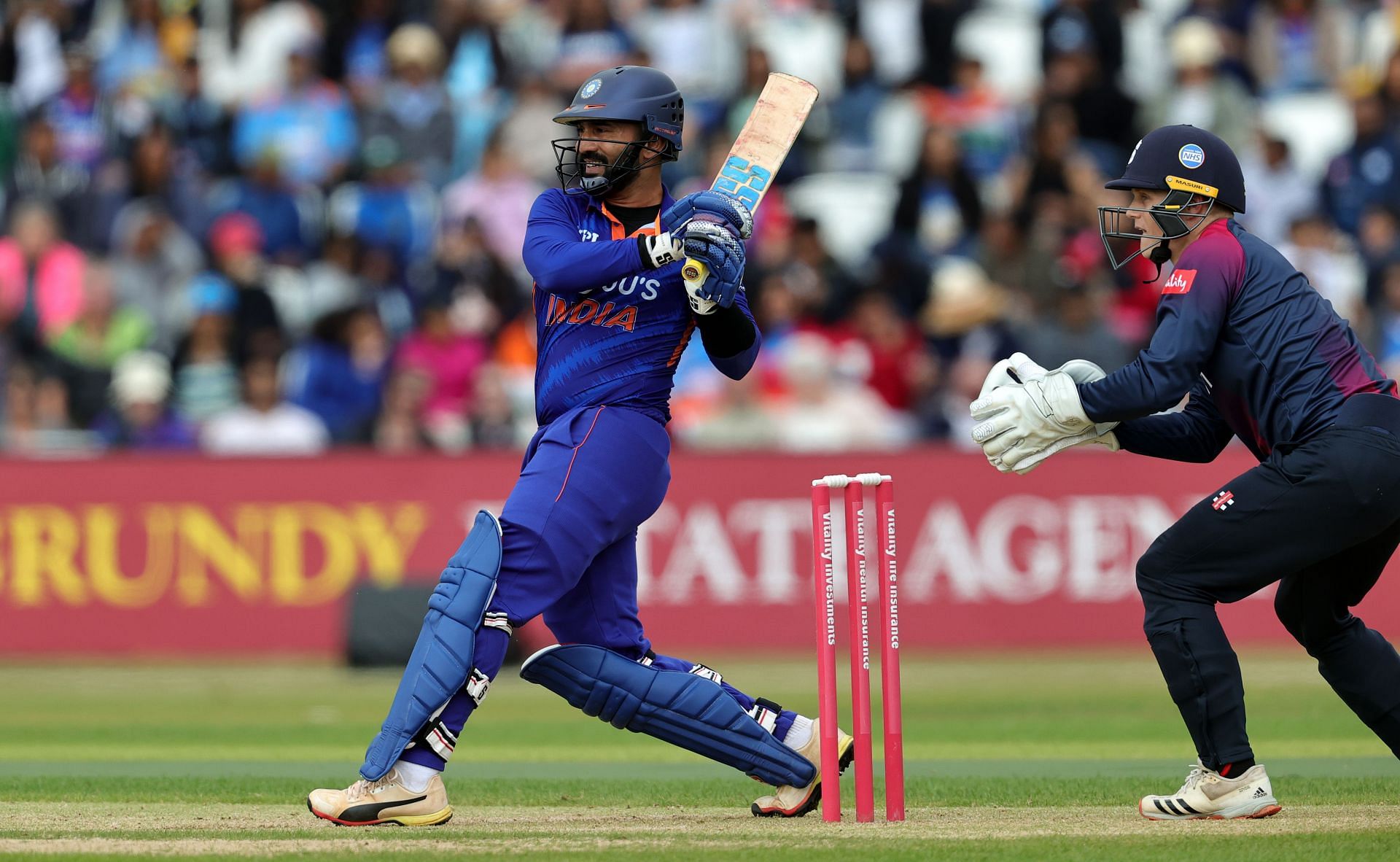
The method to Dinesh Karthik's madness as a finisher isn't difficult to understand. The incredible efficiency of his attacking shot attempts might be, but the method isn't. The sharpest minds on Cricket Twitter have come up with brilliant pieces of analysis that illustrate the various setups Karthik uses against spin and pace.
Karthik brooms his way to safety against wrist-spinners, bringing out the sweep at a moment's notice and negating most lateral movement with the most horizontal of bats. When he needs to, usually against finger-spinners, he dances down the track but he doesn't do it particularly well and he certainly doesn't do it often. As targeted prey, he adapts and survives.
Against the pacers, Karthik morphs into an apex predator. He is an outlier, simply unparalleled in his ball-striking. He crouches deep in his crease and mows deliveries over cow corner. He gives himself room and eases them over extra cover. He picks them up early and deposits them into the square-leg stands. He scoops, he paddles, he nurdles. And when he's bored of it all, he reverse-scoops.
The result? A career strike rate of 186.48 across 136 innings at the death (last four overs). Oof. 186.48. Of all the batters to have played more than 100 innings at the death in the history of T20 cricket, only AB de Villiers, Andre Russell, Virat Kohli, Kieron Pollard and Eoin Morgan have higher strike rates. Not bad company, eh?
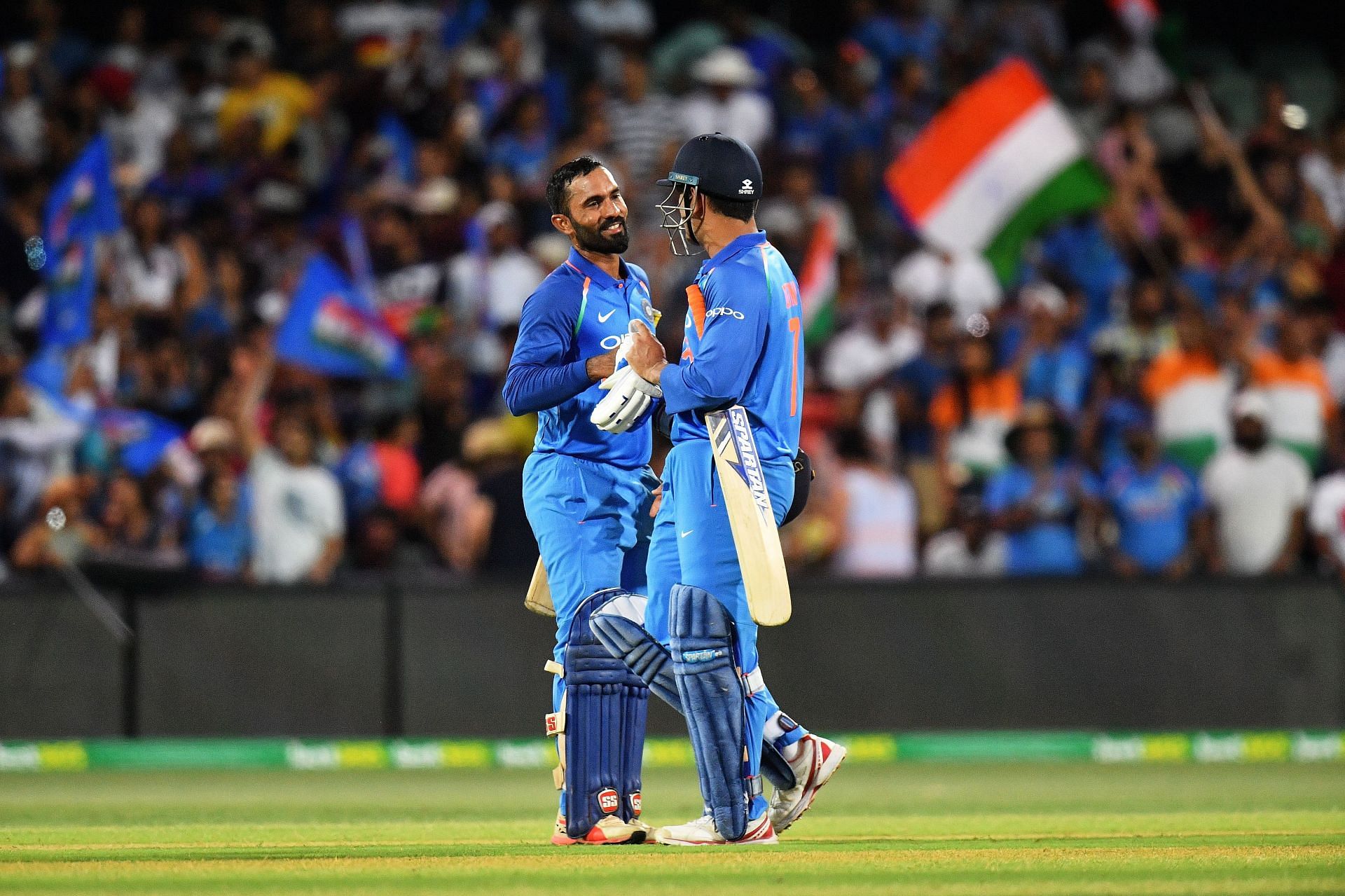
Oh, to be a bowler and not bowl to Dinesh Karthik at the death. It might be time to bestow upon Karthik the ultimate compliment when it comes to finishers. Could it be? Is he as destructive at the death as MS Dhoni was in his prime? Dhoni, the man who some (rather baselessly) claim destroyed the careers of all the glovemen of his generation, and Karthik, the man who didn't play a T20I between May 2010 and July 2017.
Rather poetically, Karthik has undertaken a role similar to the one Dhoni once played to perfection. It would be foolish to club them in the same bracket. Karthik's entry point is much more specific; his role is much more specialized. He's much more versatile with his strokeplay. On a lighter note, he's far more hyperactive at the crease. But it's impossible not to draw comparisons between the two.
Dinesh Karthik has that unmistakable aura around him now. He strikes a sense of foreboding in opposition hearts, one that isn't reflected on the scorecard or in the 10-minute highlights. He also appeals to his team's supporters around the world, something that doesn't always jump out at you and scream "boo". But it's there, and it's significant.
You can sense it when chants of "DK, DK" reverberate around the ground. You can sense it when he gallops in to bat; when he carefully positions his gloves on his handle before taking guard; when he loads up to send the ball into his adoring fans; when he calmly raises his arms in courteous acknowledgement after polishing off a chase.
You can sense it when he's picked in the T20 World Cup squad after a decade and a half, and #CongratulationsDK trends on Twitter.
Dinesh Karthik, the gritty shapeshifter
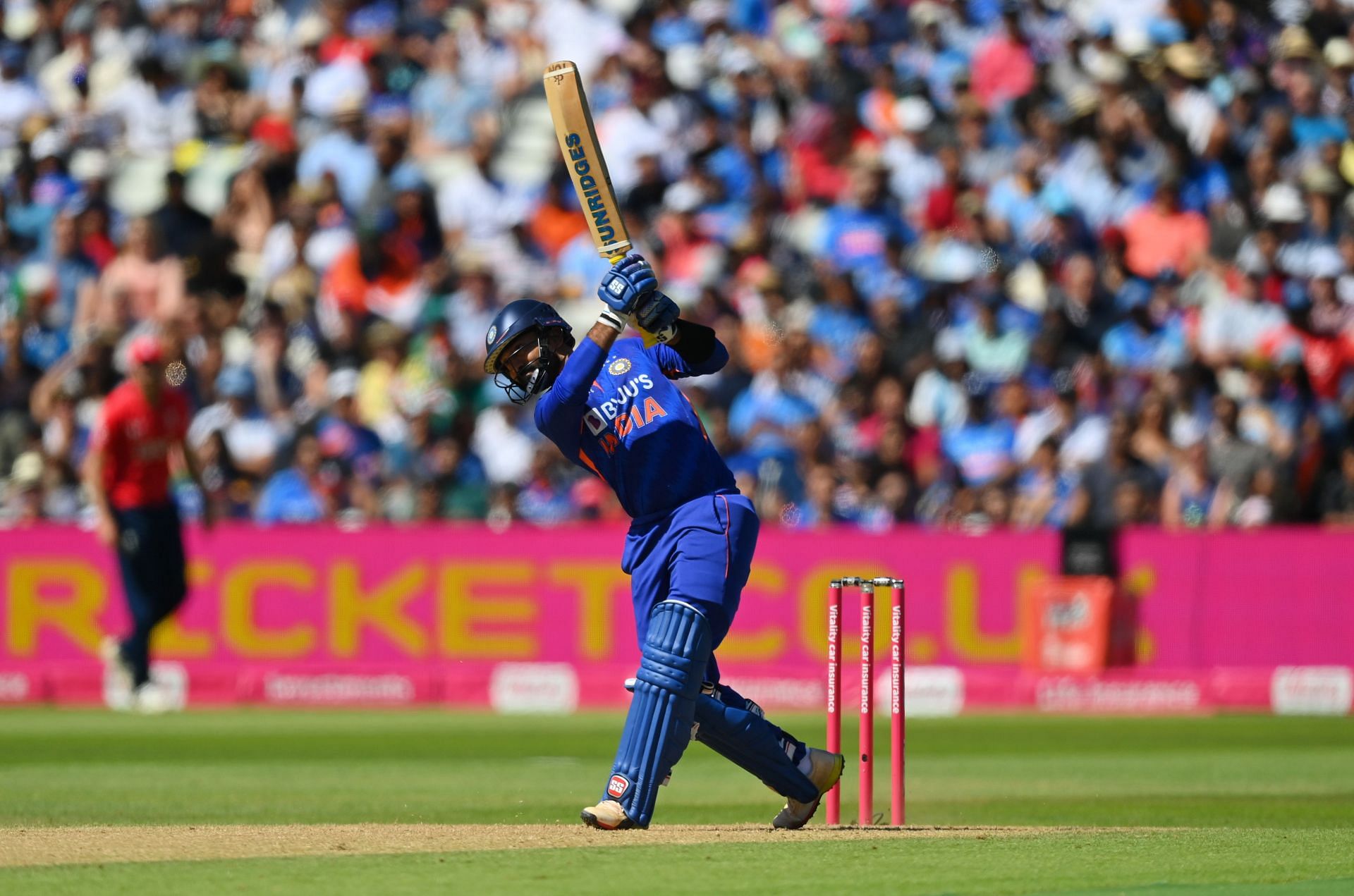
Player of the Match in India's first-ever T20I back in 2006. 2007 T20 World Cup winner. Test opener who top-scored in a challenging tour of England. Nidahas Trophy superhero and consequently YouTube record-breaker. Leader of an IPL franchise and a state team. Color commentator in the colorful shirts. Occasional weatherman. Ice-cool finisher who aces chases for dinner. Dead-rubber death bowler. Comeback king.
Dinesh Karthik is a shapeshifter, but he's also unapologetically himself, always. He's a shapeshifter who has constantly evolved with the requirements of the game and has remained true to himself through it all. He's a shapeshifter who has willed himself into his final form - a fan-favorite finisher who might just be the man to bring the elusive T20 World Cup trophy back to Indian shores.
